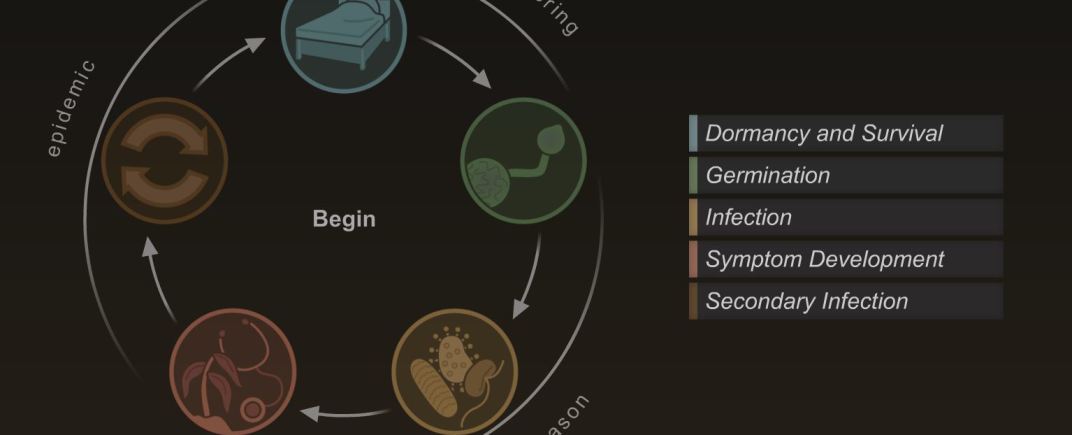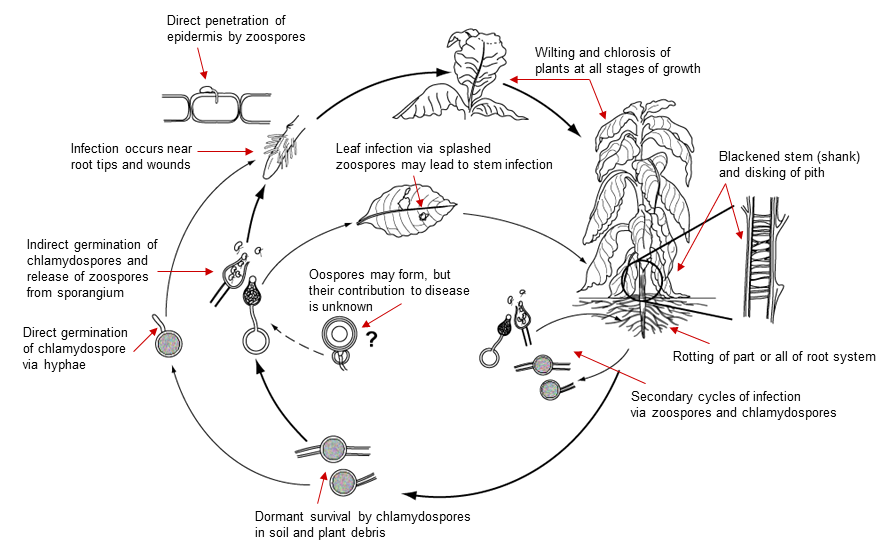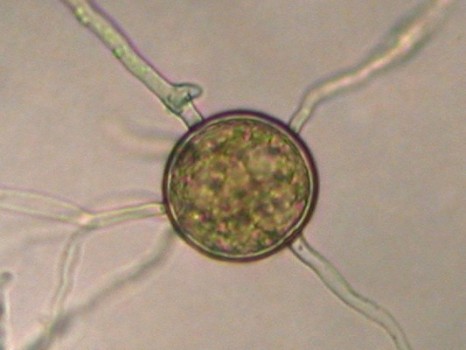Black shank is a polycyclic disease
Several cycles of black shank infections may occur within the same growing season.
Click on the button below to view an interactive multimedia guide to the black shank disease cycle (Requires Flash).
Dormancy
The black shank cycle typically begins with the dormancy stage of the pathogen, which occurs when conditions are unfavorable for pathogen growth.
The primary survival structure of the pathogen in this stage is called a chlamydospore. Its thick cell wall enables it to survive in the soil for months or years.
Germination
Infection
Zoospores swim toward roots, following nutrients that leak from root tips and wounds.
When a zoospore contacts the root surface, it encysts and produces a germ tube which penetrates the outer cell layer of the root. Hyphae form and colonize adjacent cells.
Symptom development
As the pathogen colonizes and spreads through the roots, cells collapse and die and the tissue becomes necrotic.
As the roots begin to die, transport of water and nutrients becomes limited and symptoms can be seen in stems and leaves.
Secondary infection
As the pathogen continues to colonize the host plant, more chlamydospores and sporangia are formed. These serve as secondary inoculum which cause additional infections on the initial host and adjacent plants.
Multiple infection cycles on susceptible or moderately susceptible varieties can lead to epidemics in which disease becomes widespread and can lead to significant crop losses.


